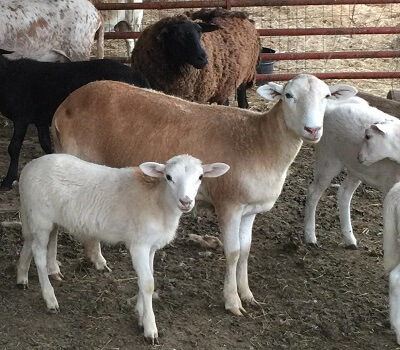

Evaluate your risk
What are the risks to your herd at various levels of disease? How many goats are you willing or can you afford to lose to disease? If all of your does aborted one year would you be able to stay in business? What are your marketing risks? If you had CL in your goats would your clients refuse to buy slaughter goats from you? If you had Johne’s disease would you still be able to sell breeding stock to other producers? The process of evaluating a farm to determine levels of risk and practical methods of limiting or eliminating risk is call risk assessment. Risk analysis involves you and your veterinarian evaluating your facilities, your disease status, your animals, and your management practices. When the assessment is completed, you should have a prioritized list of significant risks to your animals’ health and a plan to minimize or eliminate these risks.
Evaluate your facilities
Does your facility allow fence line contact with other livestock? Do you have drainage problems that will contaminate fields with manure runoff? Do you have an area where you can quarantine incoming animals? Do you have adequate facilities that allow you to separate healthy animals from sick animals? Evaluate your disease status What diseases do you have in the herd at present? If you’re not sure, think about why you cull most of your animals. Think about which animals die, taking into consideration their age and what clinical signs they had before they died. Consult a veterinarian or extension agent to better understand what might be causing these culls and deaths. It is always a good idea to submit aborted fetuses for evaluation and diagnosis.
Evaluate your animals
Are your animals genetically superior and hard to replace, or would you be better off depopulating and repopulating now? Do you want to keep two herds; one that is disease-free and one that has disease but also has good genetics? From this second herd you can introduce clean newborn animals.
Evaluate management
Is management motivated enough to develop a plan and stick to it? Is management capable of following through on a plan or will there be insufficient time or expertise available?
Set goals and prioritize
Start small and decide which diseases are highest priority. What do you want to exclude from your farm? What disease will ruin your farm? What will only reduce productivity a little? What diseases do you already have and want to get rid of? Set health goals for your existing animals. For example “all my goats will be negative for Caseous lymphadenitis (CL).” Be very specific with goals and make no exceptions to these rules; not even for your favorite pet goat. Set health goals for incoming animals. For example “All incoming goats will have to test negative for CL and come from a herd known to be CL free.”
Prepare a written document
Do this with your veterinarian or extension agent. Consider your goals, animals, facilities, current disease status, and management practices. Create a plan that fits your operation. The plan needs to cover biocontainment of existing diseases, disease surveillance, entry of new animals, quarantine procedures, and visitors. Put the protocol in writing. Post it in appropriate places and stick with it.
Communicate
Communicate with employees, neighbors, customers, and delivery personnel. Let them know what is being done and what will be required of them. Post signs that clearly delineate biosecure areas from nonsecure areas.
Implement the plan
Put it in play. See if it is workable. At least once per year, sit down and re-evaluate. Is everything working as envisioned?
 Contact Jaguza Support
Contact Jaguza Support